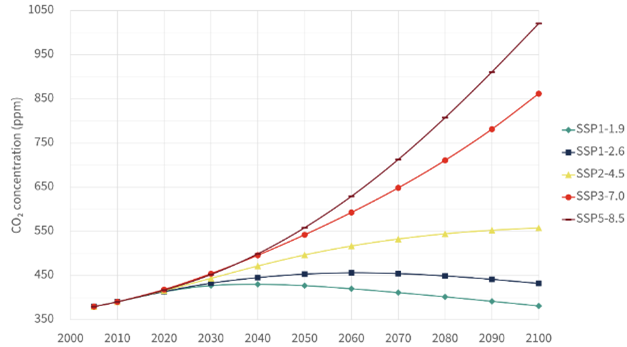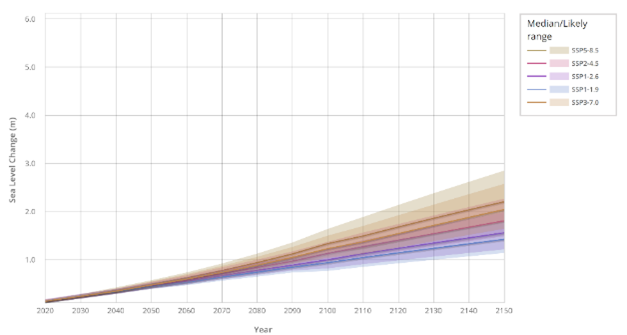Climate Change
The Intergovernmental Panel on Climate Change (IPCC) was created to provide a regular scientific assessment of climate change. The biggest impact climate change will have on the North Manila Bay Delta is sea level rise, primarily caused by melting ice on the North and South Pole and due to the general heating of ocean waters. Besides sea level rise, climate change can also have an impact on intensifying rainfall events, typhoon tracks/durations and typhoon strength. This strategy only considers the sea level rise component of climate change in this strategy. The IPCC calculates possible sea-level rise based on Shared Socioeconomic Pathways (SSP) (figure below). SSPs provide narratives describing alternative socio-economic developments.

The figure below shows the sea-level change for SSP scenarios resulting from processes whose projection is medium confidence. Two low-confidence scenarios are also provided, indicating the potential effect of low-likelihood, high-impact ice sheet processes that cannot be ruled out. Shaded ranges show the 17th-83rd percentile ranges. Projections are relative to a 1995-2014 baseline. The plot below shows the projection and uncertainties for 'Total Sea Level Change'.

The relative annual sea level trend is 1.45 cm/year (+/- 0.7 cm based on mean sea level data from 1963 to 2017). This is equivalent to a 145 cm change in 100 years. Since 1963, the sea level in the Bay may have increased by 84 cm, and it will increase by around 30 cm in the next 20 years.
Looking 50 years ahead to the year 2070 for the most conservative scenarios, 0.9 m of plain sea level rise can be expected. If the current plans for reducing carbon emissions will have the most positive effect, a 0.6 m sea-level rise can still be expected.